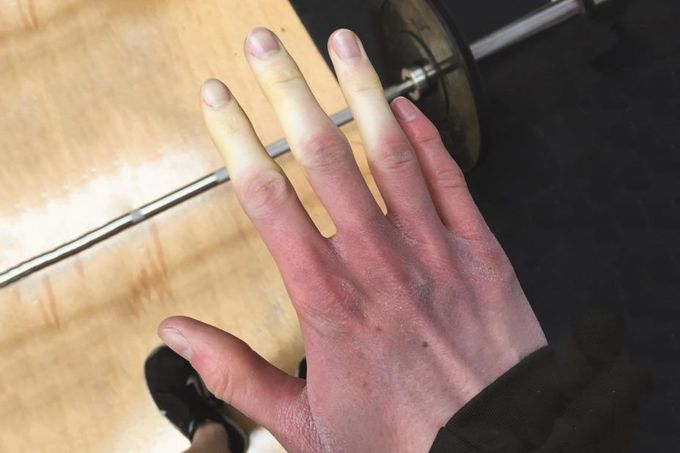


Raynaud’s Phenomenon
Raynaud’s phenomenon refers to decreased flow of blood to the fingers secondary to spasm of blood vessels. Nose, ears, nipples, toes, or knees can also be affected. The spasm of blood vessels may occur due to emotional tension, stress, or cold. Primary Raynaud’s phenomenon has isolated occurrence. On the other hand, this phenomenon may be associated with variety of disorders such as scleroderma, systemic lupus erythematosus, rheumatoid arthritis, Sjogren syndrome, CREST syndrome, polymyositis, pulmonary hypertension, and cryoglobulinemia, among others. Primary Raynaud’s phenomenon is less severe than secondary form. The most common age of primary form is 15 to 25 years. The manifestations of Raynaud’s phenomenon are: - Pale, white, or blue fingers on exposure to stress, cold, or emotional tension - Swollen, painful hands - Sores on fingertips - Gangrenous fingers There is no definitive treatment of Raynaud’s phenomenon. However, it can be prevented by avoiding the stimuli that trigger the condition. Reference: https://www.hopkinsmedicine.org/health/conditions-and-diseases/raynauds-phenomenon#:~:text=Raynaud's%20phenomenon%20is%20a%20problem,%2C%20stress%2C%20or%20emotional%20upset. Image courtesy: https://pharmaceutical-journal.com/article/news/drug-induced-raynauds-phenomenon-probably-underestimated
Living with Lupus is often a battle not just against the illness itself, but also against the emotional weight of uncertainty, fatigue, and the toll of long-term medications. For one courageous woman, that battle began in 2013. Diagnosed after Lupus had already affected her joints and internal organs, she was quickly placed on medication that initially helped. But as time went on, her health declined again this time with more frequent flare-ups and increasingly difficult side effects. Like many others with chronic illness, she faced the crushing weight of hopelessness. Each day became harder than the last, and conventional treatments no longer offered the comfort they once did. But in March 2020, at her lowest point, she made a decision that changed everything.Out of desperation and with a healthy dose of skepticism she turned to NaturePath Herbal Clinic, hoping their natural Lupus treatment might offer at least some relief. What happened next went far beyond her expectations.After completing a six-month herbal program, her flare-ups stopped entirely. Her energy returned. The chronic pain that had defined her daily life began to fade. For the first time in years, she felt like herself again. Not just alive but truly living.Her story is not just one of healing; it’s one of resilience, open-mindedness, and the courage to try something new when all else fails. By sharing her journey, she hopes to offer something priceless to others living with Lupus: hope.This treatment has been a true breakthrough for her. If you’re searching for a safe, natural, and effective alternative, I genuinely recommend giving this a chance.”www.naturepathherbalclinic.com or email them at info@naturepathherbalclinic.com


